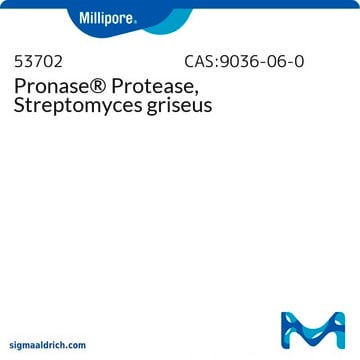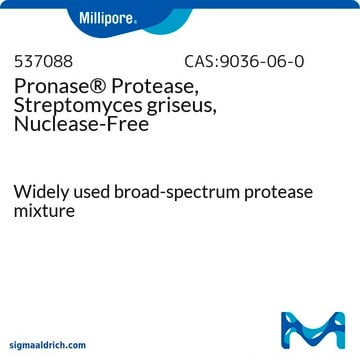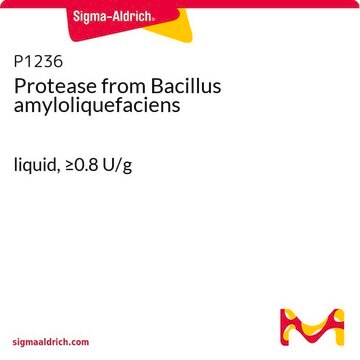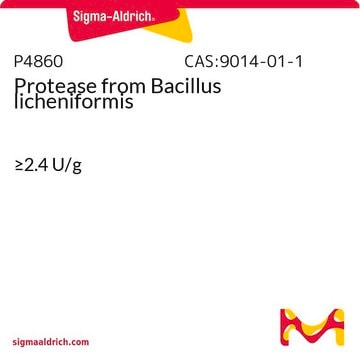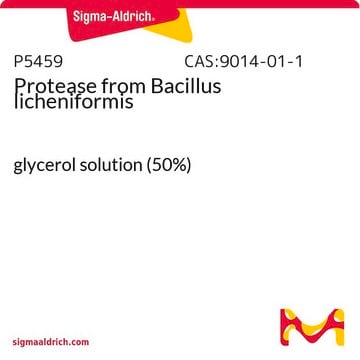P8811
Protease from Streptomyces griseus
powder, BioReagent, suitable for mouse embryo cell culture, ≥3.5 units/mg solid
Synonym(s):
Actinase E, Pronase E
About This Item
Recommended Products
product line
BioReagent
form
powder
specific activity
≥3.5 units/mg solid
technique(s)
cell culture | embryo: suitable
impurities
starch, essentially free
storage temp.
−20°C
Looking for similar products? Visit Product Comparison Guide
Related Categories
Specificity
Application
Other Notes
Quality
Physical properties
Unit Definition
Preparation Note
related product
Signal Word
Danger
Hazard Statements
Precautionary Statements
Hazard Classifications
Eye Irrit. 2 - Resp. Sens. 1 - Skin Irrit. 2 - STOT SE 3
Target Organs
Respiratory system
Storage Class Code
11 - Combustible Solids
WGK
WGK 2
Flash Point(F)
Not applicable
Flash Point(C)
Not applicable
Personal Protective Equipment
Certificates of Analysis (COA)
Search for Certificates of Analysis (COA) by entering the products Lot/Batch Number. Lot and Batch Numbers can be found on a product’s label following the words ‘Lot’ or ‘Batch’.
Already Own This Product?
Find documentation for the products that you have recently purchased in the Document Library.
Customers Also Viewed
Articles
Mouse embryo media and embryo validated reagents for transgenic mouse embryo culture
Our team of scientists has experience in all areas of research including Life Science, Material Science, Chemical Synthesis, Chromatography, Analytical and many others.
Contact Technical Service

